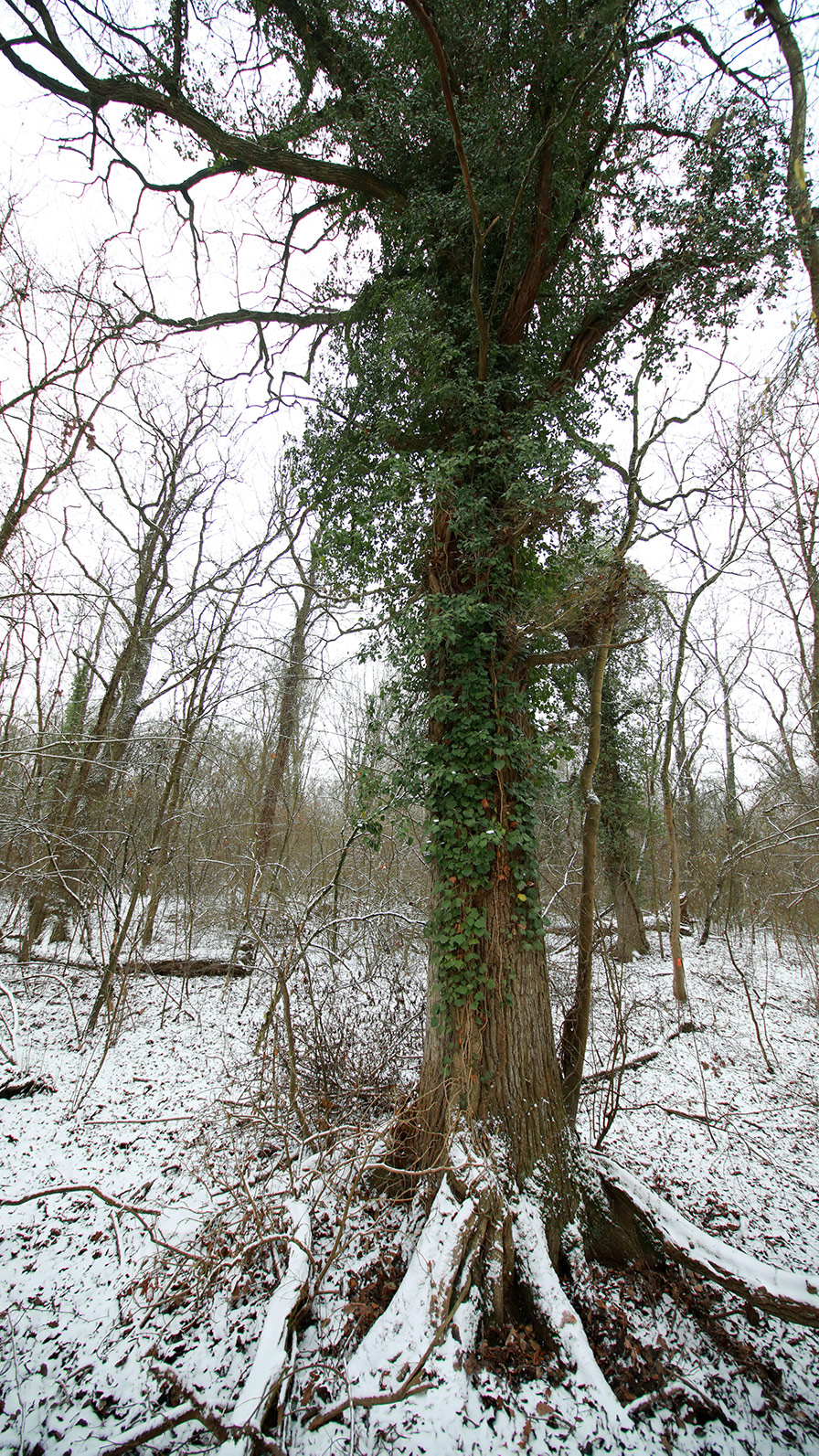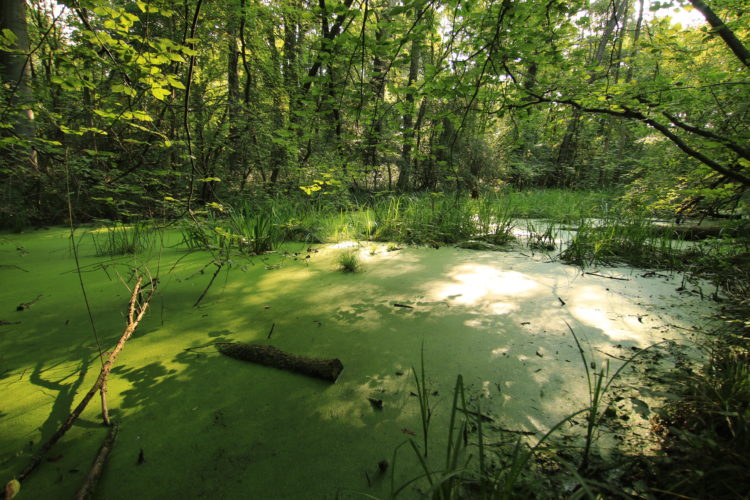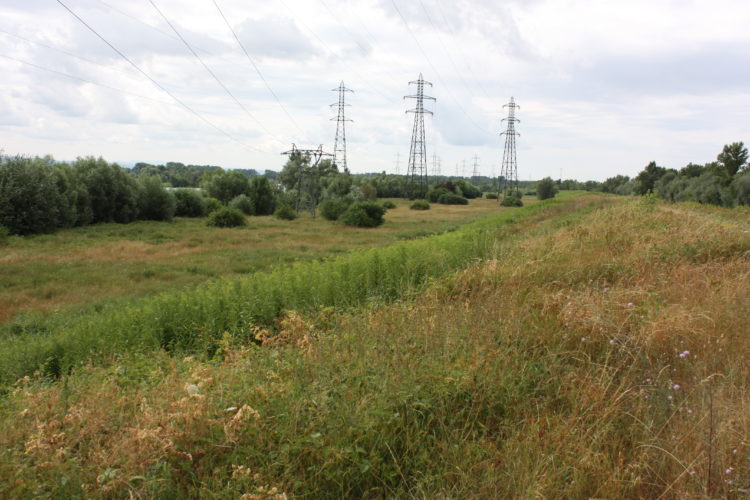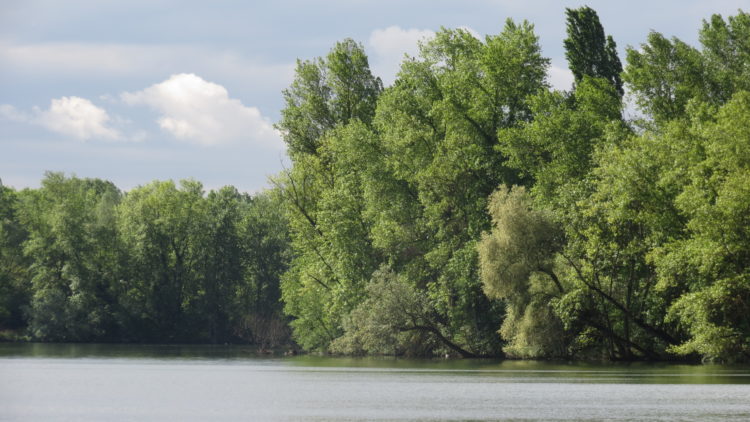
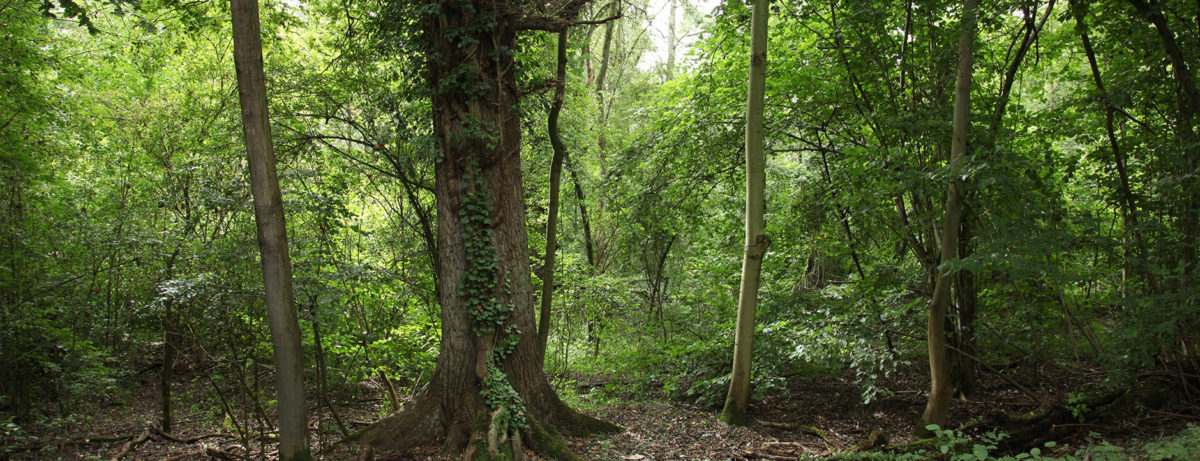
Hardwood Alluvial Forests
The hardwood forest, the terminal stage of the mature Rhine forest
Dominated by the common oak (Quercus robur), European ash (Fraxinus excelsior), and field elm (Ulmus minor), this forest formation is known as a “hardwood” forest as opposed to the previous stage composed of the “softwood” willow and poplar species. This is the most mature stage in the evolution of the alluvial forest and is found in areas that are further from the minor bed of the river, less impacted by the force of the floods.
Almost half of Rohrschollen Island Nature Reserve is hardwood forest (103.12 ha). The silvicultural study in 2005 identified two fascies: the Rhine oak-hornbeam forest and a variant developing on the driest terraces, the Rhine lime forest with Carex alba.
Before the canalization of the Rhine when it benefited from the positive affects of the spring floods, this forest was characterized by the exceptional size attained by the trees, shrubs and woody climbers (clematis, ivy, etc.). After 1970 and the final correction work on the river, Rohrschollen’s forest suffered for many years from the absence of floods which caused a banalization of the forest cover (loss of alluvial character). The LIFE+ project completed in 2014 set out to re-flood the island and restore the pre-canalization conditions of the Rhine.
Some of these habitats are habitats of European community interest which justify the Reserve’s inclusion in the Natura 2000 network.
These habitats are according to the Natura 2000 nomenclature:
- 91F0 Riparian mixed forest of Quercus robur, Ulmus laevis, Ulmus minor, Fraxinus excelsior and Fraxinus Angustifolia along the great rivers (Ulmenion minoris);
- 91F0 (9170) Galio-carpinetum oak-hornbeam forests
47 species of tree and shrub: Rohrschollen Forest is home to a wide variety of species characteristic of alluvial forests.
Source : ONF 2005
